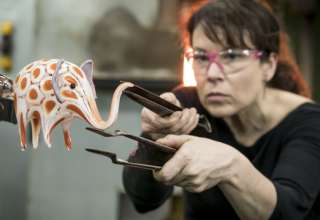Photos by Ruth J. Katz
I raise my baton to alert the orchestra that I am ready to conduct. In my best imposture of Gustavo Dudamel, I cue the woodwinds, then coax in the stringed instruments, and finally, I direct the brass-perching on the precipice and at the ready-to chime in. I punctuate my air-piercing baton-swirling, with a jab toward the timpani to elicit an emphatic beat. Smug and sly, I think that Felix Mendelssohn’s Italian Symphony never sounded so expressive. As if following my intensity, the surrounding chamber becomes enveloped in a saturated vermillion glow that melts into an intense violet, as I command the orchestra…and we sprint together to the end of the first movement.
Alas, I am conducting nary a human, but rather a dozen or so electronic totems, synced to the digital leger-de-main that is the underpinning of Leipzig’s Mendelssohn House Effektorium, a room for making virtual music. This is 21st-century, sophisticated child’s play: A dozen or so monolithic speakers (labeled appropriately, first violins, double basses, French horns, and so on), populate this symphony hall. You take your position at the lectern and then follow the snaking, red-line guide along the score; press the touchscreen, wield the baton to change tempo and tone, and suddenly you and your crop are Bernstein, Mehta, or, well, Maestro Mendelsson.
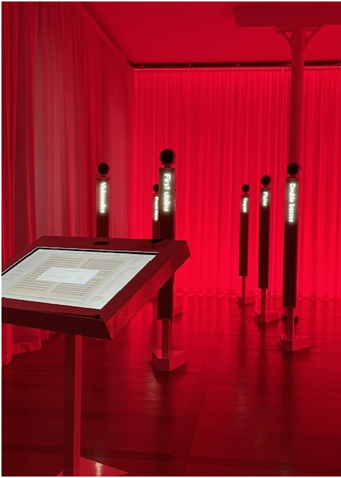
The meticulously restored Mendelssohn House in Leipzig is where the musical genius lived from 1845 until his death two years later; he was the Kapellmeister of the city’s renowned Gewandhaus Orchestra from 1835 to 1847. The museum opened in 1997 and is a major draw here, in a city legendary for its musical history. This charming municipality represents, though, merely one reason to visit the northeastern federal state of Saxony, in Germany.
Spread out over 7,000 square miles and bordered snugly to the east by the Czech Republic and Poland, and to the south, Bavaria, it is one of the smallest of the 16 federal states comprising Germany. But it is enviably bursting with compelling sites and sights to make it your next travel destination. Here is but a smattering of things to do and see in this inviting, remarkable region of Germany.
Among other draws, it is home to a veritable cornucopia — more than 150! — of palaces (schlösser), fortresses (festungen), stately mansions (herrenhäuser), and regal parks, such as Muskau Park, a stunningly bucolic UNESCO World Heritage Site.
Some of these edifices are virtual ruins, like the Dahlen Castle; some, a fascinating pile of rocks, as the spellbinding remains of Neurathen Castle (with rooms that had been cut into the stones); some are absolute fortresses, like Mylau Castle; and still others are overwhelmingly regal manses, such as the stately Dresden Castle and Leipzig’s elegant Gohlis Palace. Some are just for visiting, presenting interesting photo ops, while others are luxury hotels, and still others are homes to museums, such as the stately Augustusburg Palace, where I spent several hours in its amazing Motorcycle Museum: Spanning over 120 years of motorcycling history, the exhibits range from funky bicycles to exquisite, burnished-to-perfection Harley Davidsons.
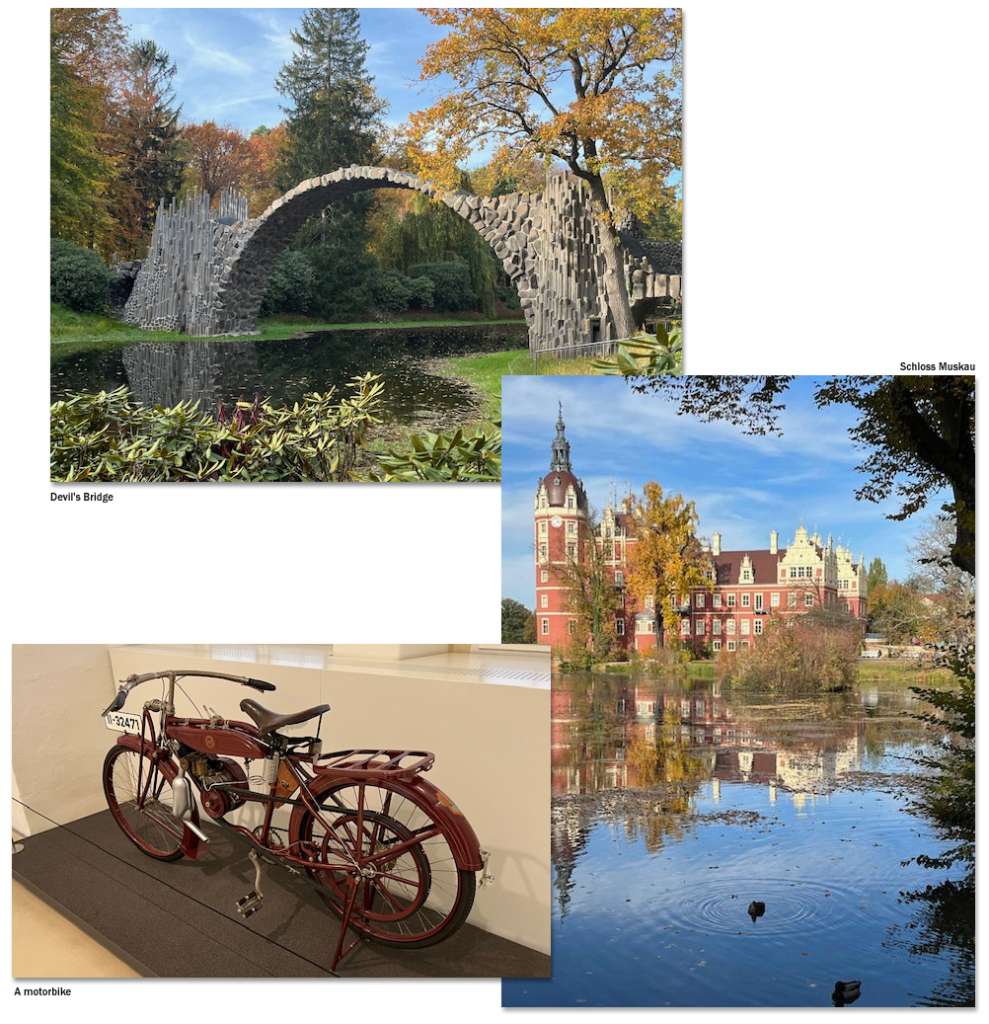
The Schloss Muskau in Muskau Park.
A motorbike in the Augustusburg Motorcycle Museum.
Music is a hallmark of Saxony’s heritage, and the Leipzig Music Trail is a must for anyone who loves music. It is just over three miles long and heralds Telemann, Bach, Schumann, Wagner, Grieg, Janáček, and Mahler, among the many notable composers who worked or lived there. Stainless steel swirls-think the Nike swoosh on steroids-mark the spots (11 of them) in the cobbled pavement where you can stop, listen to recordings, and read about musical history.
Do not pass up a performance at the legendary, glass-facaded Gewandhaus. And, while in Leipzig, be sure to visit the Holocaust Memorial, consisting of 140 vacant bronze chairs — representing the 14,000 Jews who perished — built on the site where the city’s Grand Synagogue once stood.
Despite its devastation in WW II, Dresden, another touchstone in Saxony, has been rebuilt and you’d never know the extent of the destruction 75-plus years ago. No mention of Saxony is complete without an in-depth stay in charming, history-filled Dresden, including a lengthy visit to the world-renowned Green Vault, or the Grünes Gewölbe, comprising the Historic Green Vault (dripping in sumptuous Baroque ormolu and splendor) and the New Green Vault (with more traditional collections). Combined, here is one of the grandest collections of decorative arts, simply put, in all of Europe. Founded by Augustus the Strong in 1723, its exhibits include everything, ranging from Baroque to Classicism. You could drool over the art here for days.
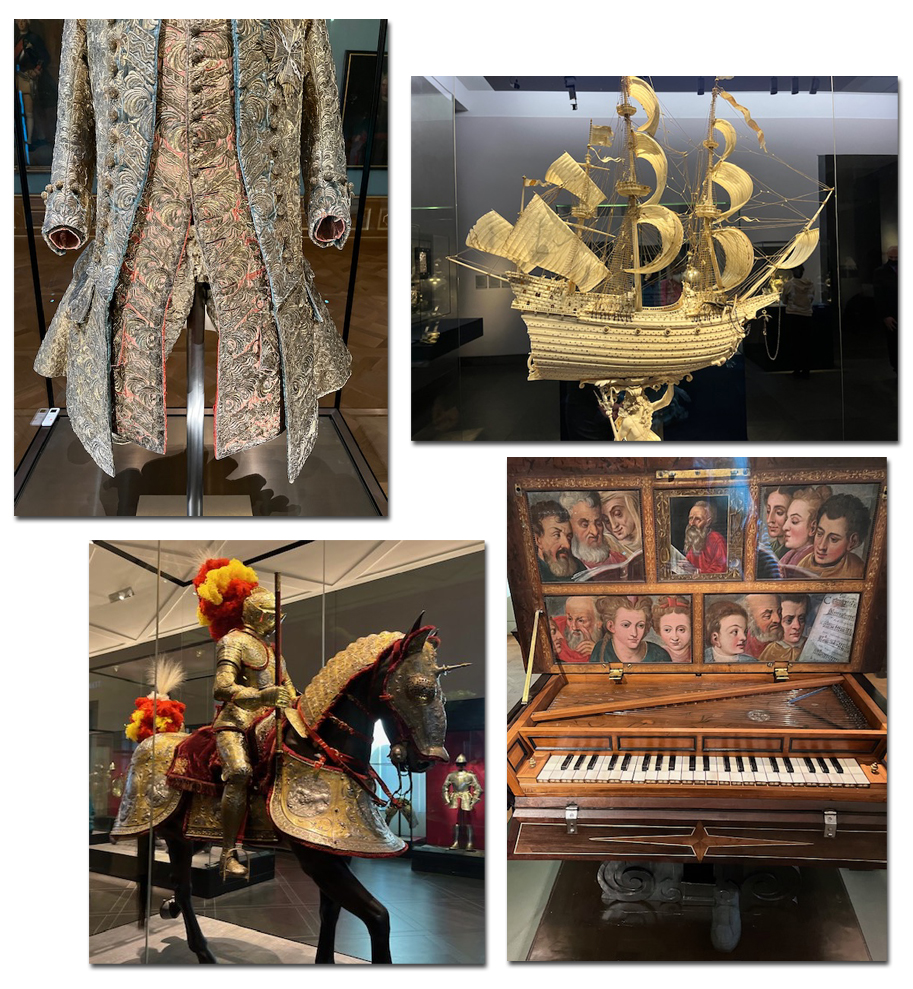
Leave music and art (but not architecture) behind for the moment and enter the razzle-dazzle of Hollywood, when you visit the cinematic epicenter of Eastern Europe-Görliwood, the easternmost city in Germany, properly known as Görlitz. Countless films, including Inglourious Basterds, The Reader, The Book Thief, and The Grand Budapest Hotel, among the many, were all filmed right here.
For architecture buffs, this town is also home to more than 4,000 listed buildings and is considered Germany’s largest heritage area. Some religious sites: The Holy Sepulchre is the most faithful copy of the Jerusalem site. Amazingly, the Art Nouveau-styled Görlitz Synagogue, built at the beginning of the 20th century, survived Kristallnacht. Thereafter, however, with no congregation to tend to it, it fell into tragic disrepair. After a 10-million-Euro restoration, the synagogue reopened; on August 20, 2021, the first service in 80 years was held. Today, it houses modest but highly evocative and meaningful exhibits, showcasing personal artifacts and memorabilia that had once belonged to Jewish residents of Görlitz.
And, parenthetically, while you are in Görlitz, you can actually savor a tiny taste of Poland: Cross the Old Town Bridge, et voila! You are in Polska!
Another city worth at least a day of your time is the town of Seiffen. While it’s true that the internationally renowned German Christmas markets, in general, are among the most celebrated in the world, it is here in Seiffen that you’ll feel you as if you’ve entered the North Pole and Santa Land.
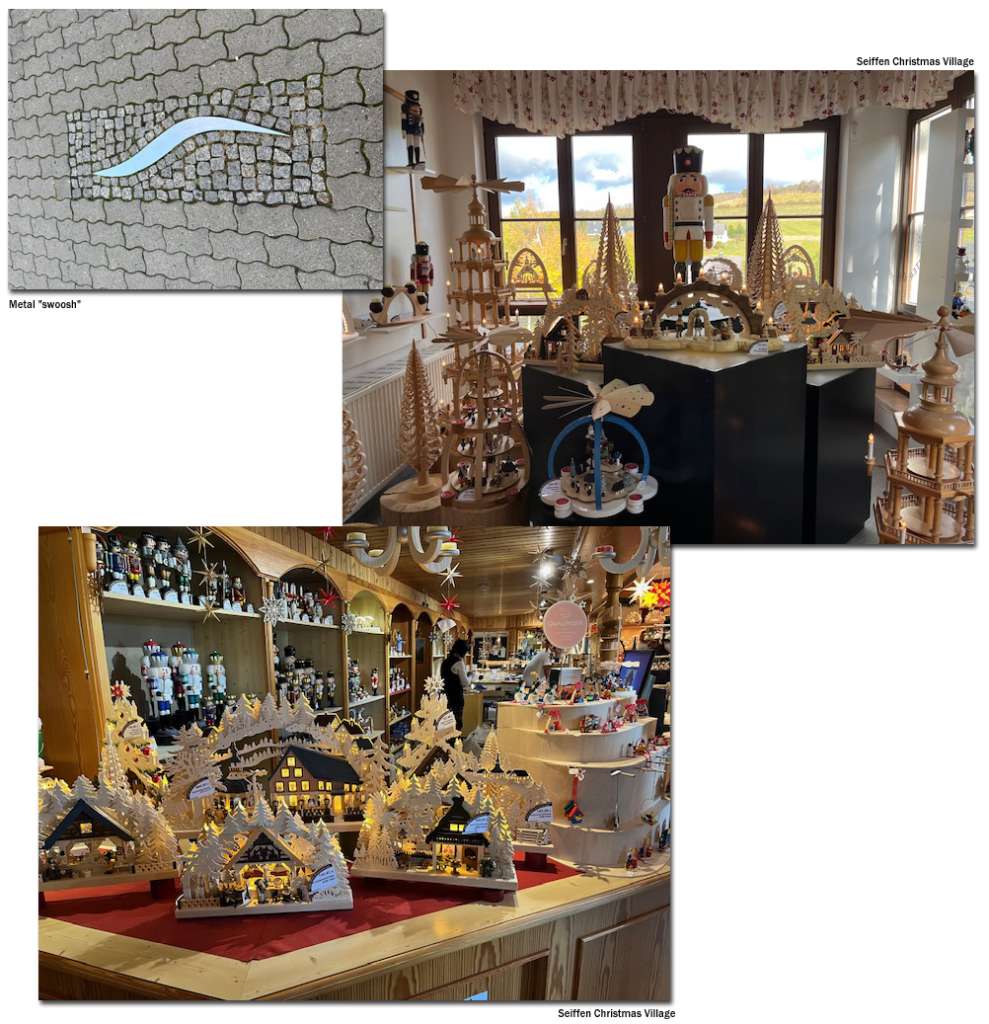
The charming forever-Christmas village of Seiffen.
Seiffen boasts a blindingly festive, year-round Noel. This holiday-themed town, nestled in the Ore Mountains, was once the go-to site for silver- and tin-mining, but as supplies of those metals declined, residents turned to wood-carving and -turning. Dozens of shops vend all manner of traditional ornaments, including the ever-popular pyramids and arches, and, of course, the nutcracker, first created in the 17th century in Germany.
(There is even a nutcracker museum-ErstesNussknacker Museum-in Ergzebirge.) There are workshops where you can watch master woodworkers spin their magic or create your own ornaments.
A must in Seiffen: The traditional Neinerlaa Xmas Eve dinner, with its elaborate, sculpted platter, featuring little niches for, among the nine obligatory foods, bratwurst, dumplings, and sauerkraut.
Seiffen is also home to the Ore Mountain Open-Air Museum, an ethnographic exploration of rural life pre-1900, documenting and showcasing over a dozen types of rural homes from the region. It is adjacent to the Ore Mountain Toy Museum, a must-see. Unique to this area: Artisans turn circular wooden forms against a lathe and create miniature animals, smaller than a dime. This craft is known as Runddreherei, a form of very sophisticated and intricate woodturning and must be seen to be understood.
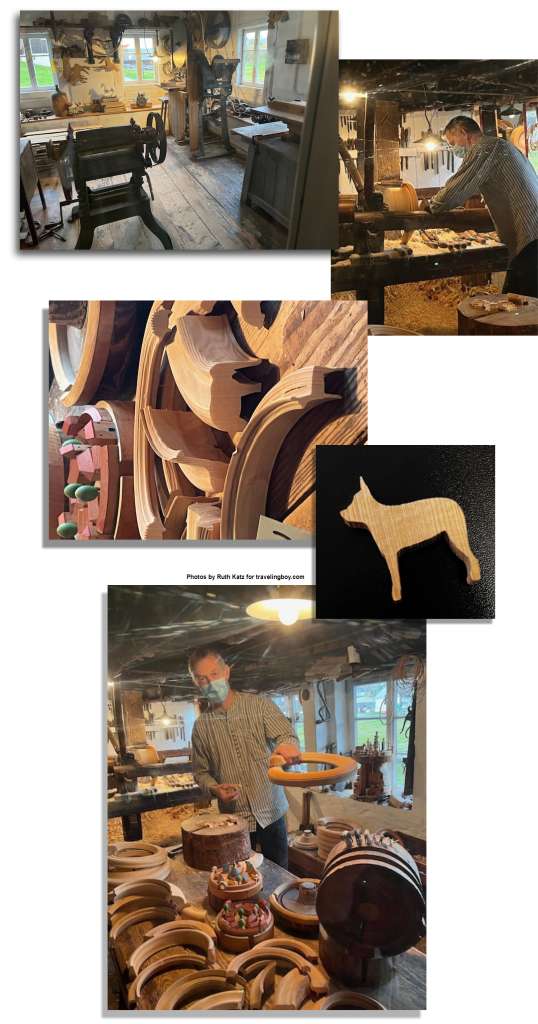
Not to be outshone by the splendor of Dresden, the musical heritage of Leipzig, the Christmas magic of Seiffen, and the glam of Görlitz, the town of Chemnitz is the third-largest city in Saxony and it, too, offers many sights. The Villa Esche, built by Belgian architect Henry van de Velde, was the home of the Herbert Esche family, and features a stunning meld of Belle Epoque and Art Nouveau styles, well worth swooning over. I could have spent all day in the Saxon Museum of Industry, located in a former foundry in Chemnitz. It brings machines and man together in unexpected ways, whether exploring vehicles or textiles.
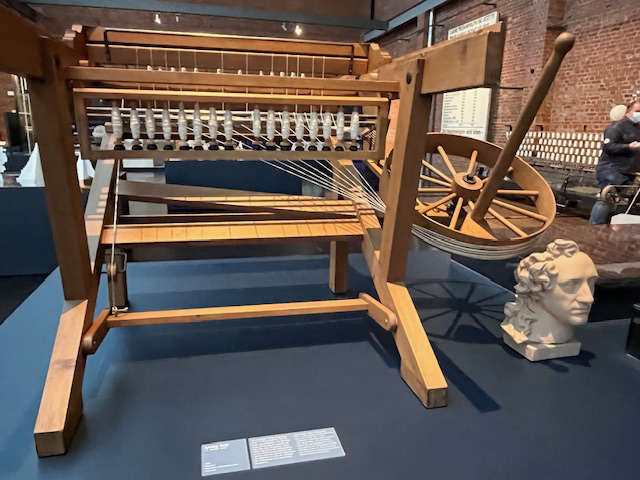
I could go on about Saxony and its plethora of UNESCO World Heritage sites and parks, the Museum Gunzenhauser (with a collection of nearly 2,500 works of modern art), the fascinating Bach Museum, the Grassi Museum of Ethnology (among the extensive collections, hundreds of teacups!), and-for wristwatch aficionados-the manufactures of A. Lange & Söhne and Glashütte Original, in the south. But, in truth, you just need to pack your bag and go! Willkommen!
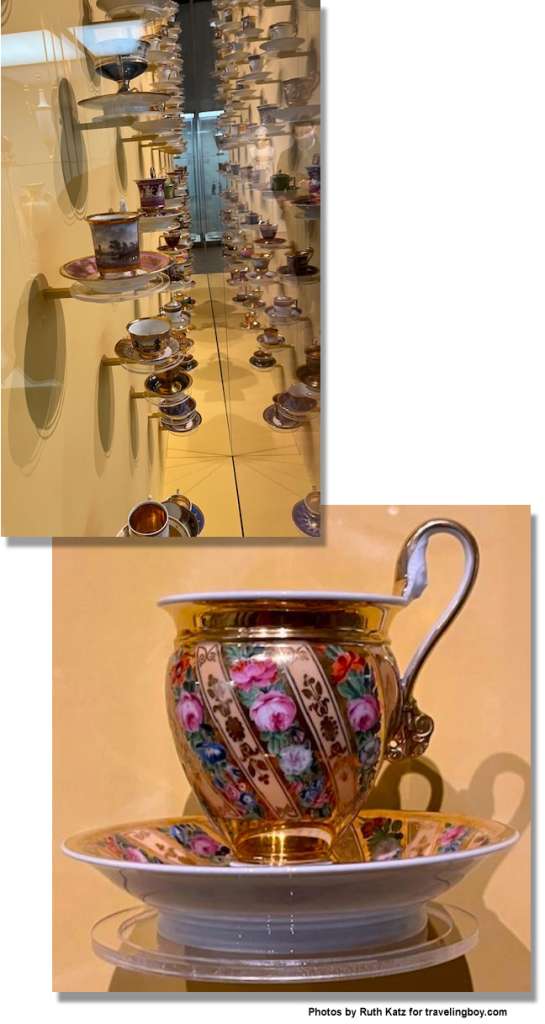
For more info go to visitsaxony.com.
All photos courtesy of the author.
© 2024 Ruth J. Katz All Rights Reserved


